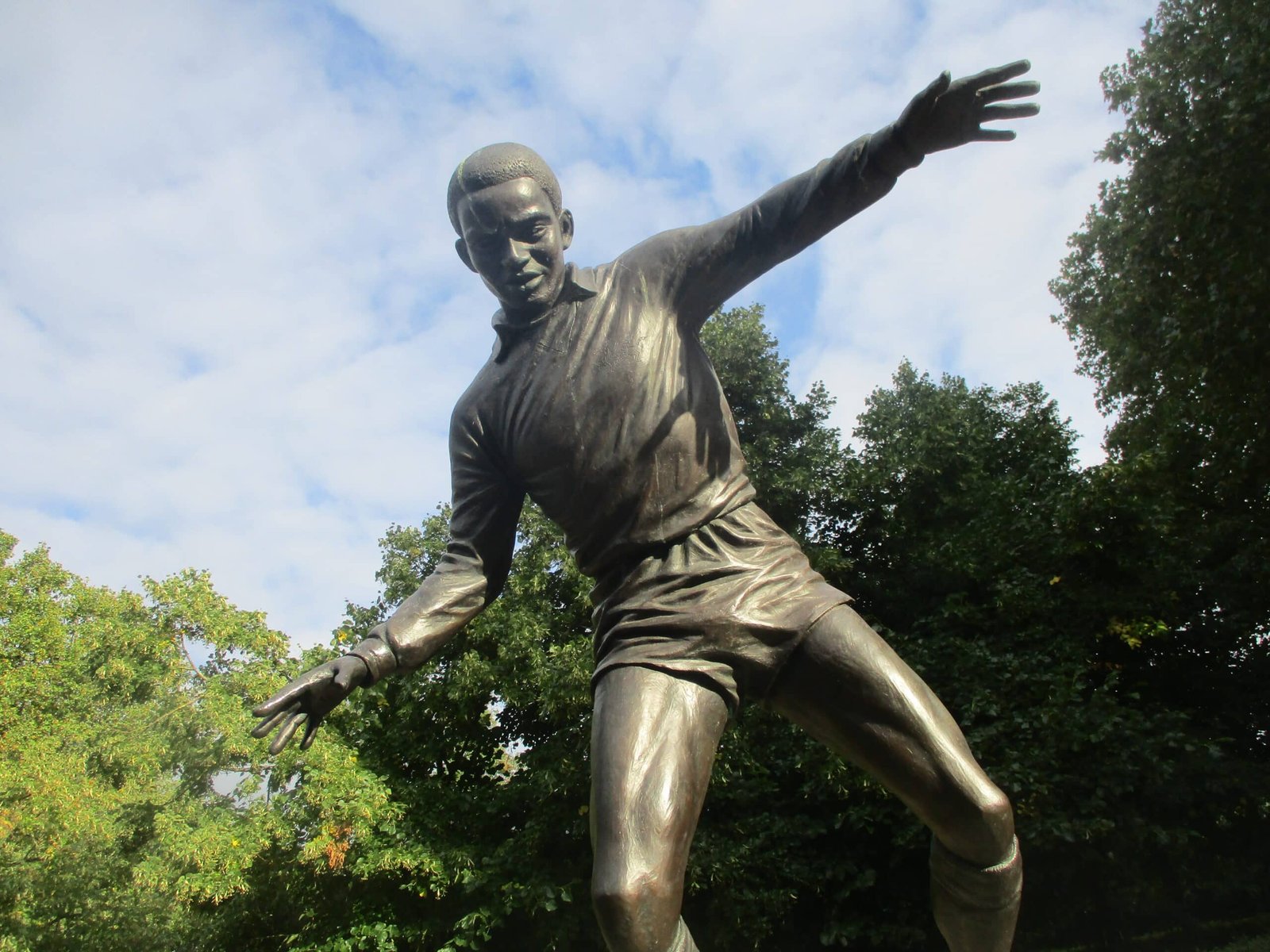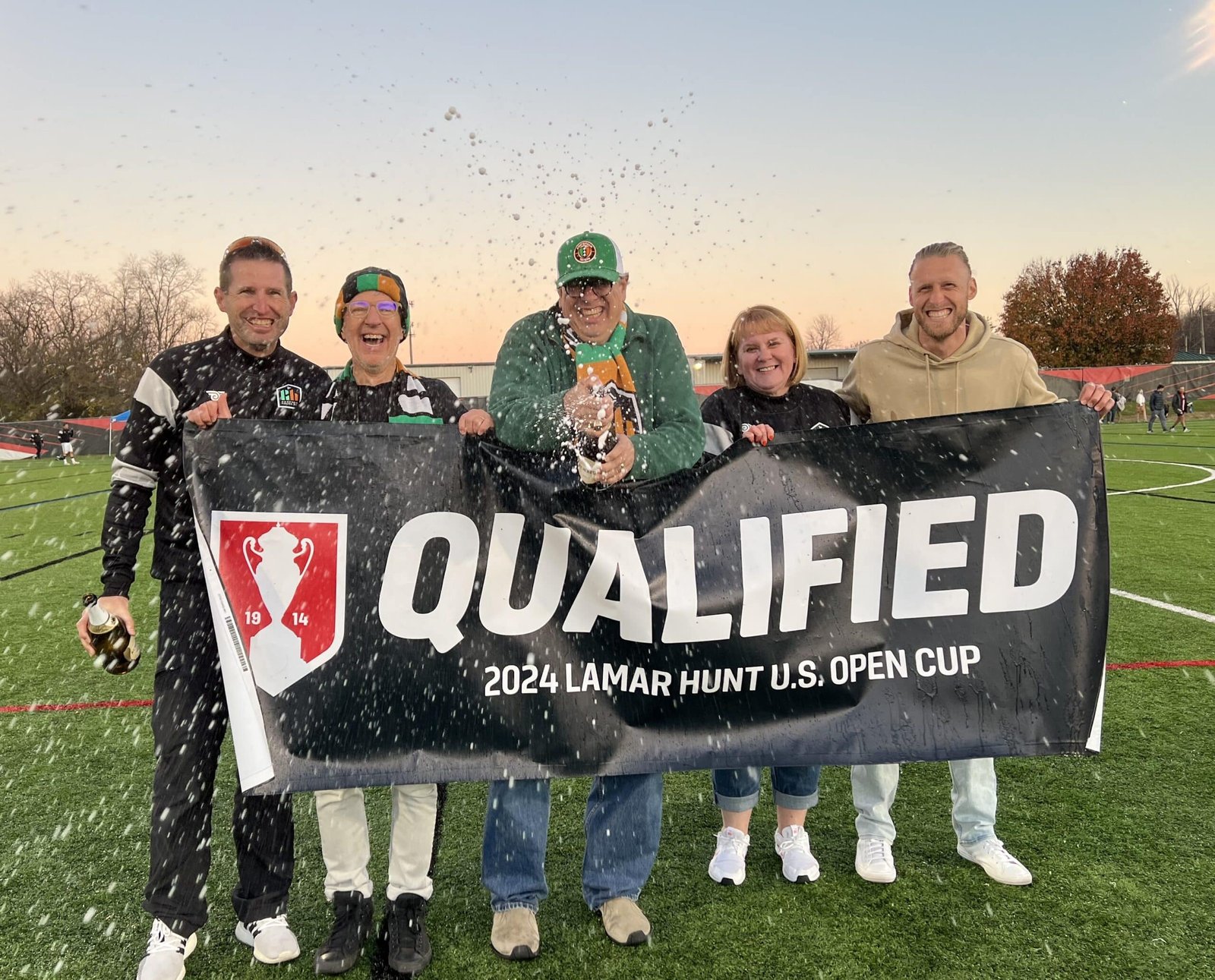Colin Young visits Crook to discover a century-old stand, an Indian legend and no pies
Crook Town’s FA Cup dreams are already over, almost as quickly as the pies vanished at their Sir Tom Cowie Millfield ground. With the game against Kendal Town standing 1-1 at half-time, the chips, curry sauce and sausages at Only Foods and Sauces were being saved for the players after the final whistle.
By then, the busload of visiting Cumbrians were celebrating their 3-1 win in The Footballers, gearing up in the stadium bar for the two-hour journey home – with all the usual Saturday night stops on the way.
The road to Wembley 2025-26 began in earnest with the Extra Preliminary Round of 200-plus games over the weekend of Saturday, August 2. This one brought together these ninth-tier rivals from the Northern Premier First Division. For hosts Crook Town, there will be no repeat of their historic run to the Third Round in 1931-32.
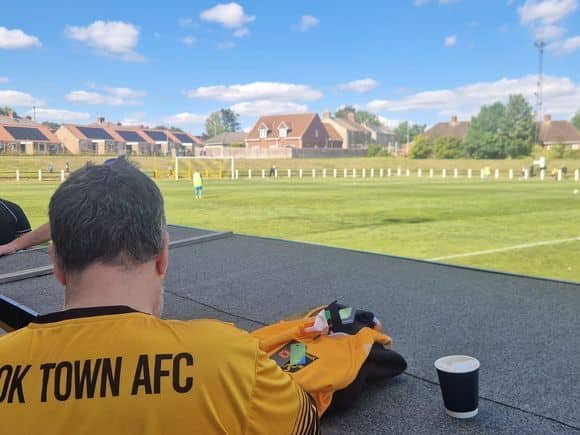

One particular witness to the occasion was former Northern League chairman, local writer and wordsmith Mike Amos. You know you’ve chosen the right game if you bump into this North East non-league legend on his many travels.
Mike has been catching buses from his Scotch Corner home to reach every ground across the region for more than 60 years. Prowling and pausing, sitting and note-making around the pitch, he extols the medicinal benefits of the ales in each club bar and local pub before catching his bus home, and writing his witty and beautifully observed blogs. Once upon a time, Mike’s musings appeared in his weekly column, Backtrack, in the Northern Echo. Now his reflections can be perused on his site, Grass Routes.
Over the weekend, he could have gone to watch his beloved Shildon knock Ashington of Charlton legend out of the FA Cup, but chose instead to travel to Crook, where he arrived just in time for the visitors’ first-minute opener.
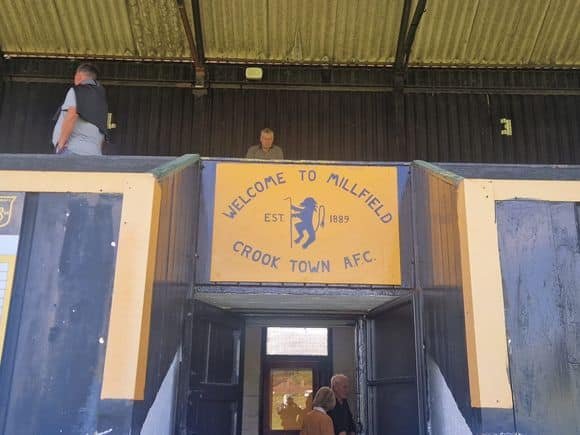
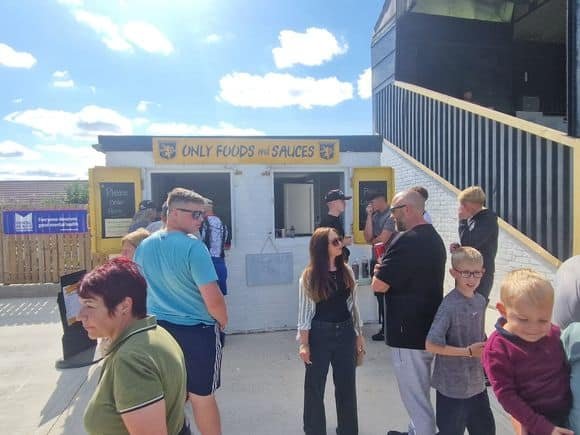
But it wasn’t just the opening round of the world’s oldest cup competition nor the pies which had piqued Mike’s interest. The stand at Millfield is one of the few surviving ones of its kind in the UK – and, therefore, the world.
As Mike writes: “It’s also a chance to enquire if anything’s yet in place to mark the centenary of that magnificent and much-loved old stand, costing £1,300, seating 500 and opened by the Hon Joseph Pease on October 17, 1925 ahead of a league game against Bishop Auckland”.
“You’d be the first to know”, he is assured by Crook chairman, Chris MacDonald.
On a sunny Saturday in August, the historic stand shines. There’s new fencing and welcome new hard-standing – but otherwise no balloons or bunting, just another 90 minutes in a century of service.
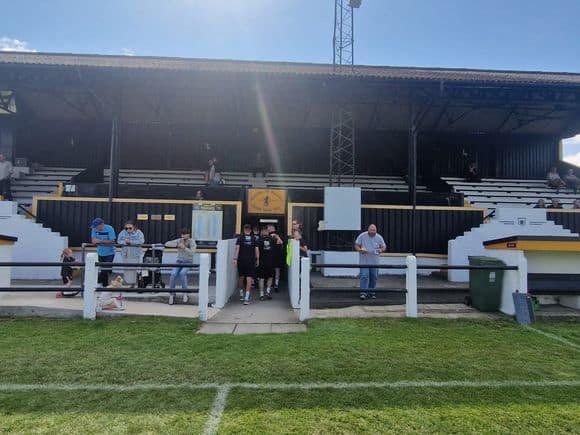
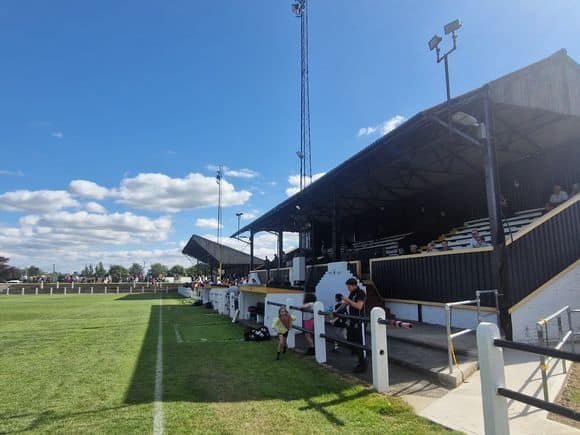
MacDonald insists that there’ll be a celebration – “We’re just waiting to hear from the council” – and that they’re also planning to mark the golden jubilee of Crook’s incredible tour to India in 1976.
“It was organised,” explains Mike knowledgeably, “by a local GP, Arun Banerjee. Crook became the first English club to tour India when they played six games in front of a combined total of half a million people”.
Nearly 50 years on, Mike cannot fail to point out Saturday’s crowd at Millfield of 282 people.
Although Ashington’s favourite son pulled out of the tour the day before departure – unwittingly inspiring the title of Steve Chaytor’s history of the Indian sojourn, Can You Get Bobby Charlton? – more than 100,000 turned out to see Crook take on the Indian national side on the Test ground of Eden Gardens in Calcutta.
“They also played another match in front of 40,000 on a pitch cut into the hillside in the shadows of Mount Everest,” describes Mike in reverential tones.
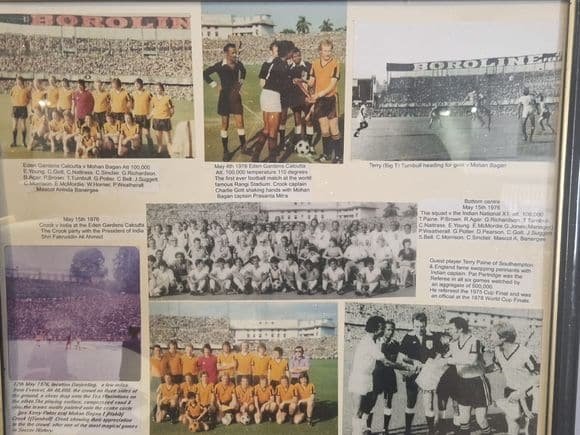
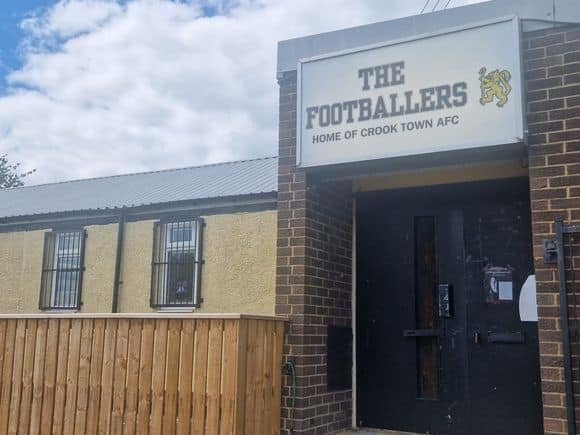
Team manager Gordon Jones managed to persuade ex-England international Terry Paine to make the trip for the final game at the end of a fortnight, and took along a motley crew from York, Hartlepool and Darlington. “I didn’t want any straight-laced sods,” insisted Gordon.
Crook was also home to Jack Greenwell, one of FC Barcelona’s early pioneers who organised three tours to Catalonia for his local club. A picture of a young Jack is among the dozen or so fading framed prints on the Millfield walls. A half-dozen gather dust on the floor, awaiting new nails and pins. Highlights of India feature heavily.
Mike Amos also points out Crook’s legendary cup runs depicted on the walls, including the 1939 FA Amateur Cup Final against Bishop Auckland. An initial draw at Wembley and subsequent replays at St James’ Park and Ayresome Park generated a combined crowd of 200,000.
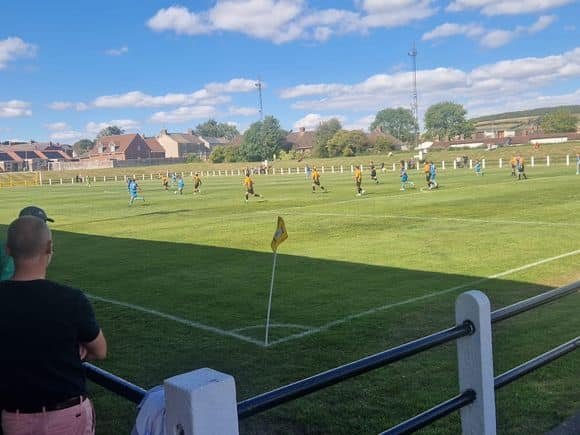

Crook’s current manager Jamie Tunstall had talked pre-match about reversing his side’s poor start to the league season. It only took visitors Kendal ten seconds to go 1-0 up. Although Crook’s Corey Nicholson could have set up an equally dramatic finish to the game, his penalty didn’t register.
On the weekend of August 16-17, therefore, Kendal will travel to the winners of West Allotment Celtic and Northallerton Town, who drew 1-1 while Crook and the Cumbrians were doing battle.
For Mike Amos, the Preliminary Round could mean a trip to West Auckland Town or Newton Aycliffe, Birtley Town or possibly Whickham FC. As ever, the North East is his oyster.
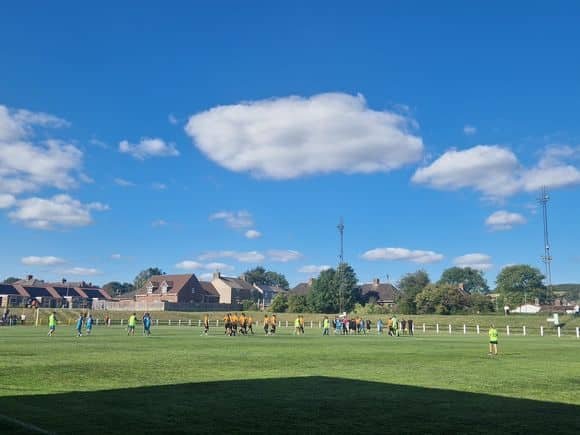
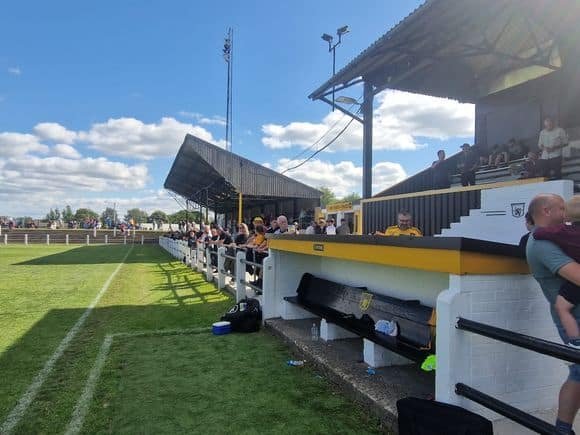
Saturday’s defeat overshadowed Crook’s FA Cup heroics of last season, when they beat Ashington to reach the Second Qualifying Round, where they lost to Witton Albion in front of 571 spectators.
The disappointment was not lost on manager Tunstall, whose team has to make the four-hour return trek to Kendal to fulfil a league fixture this Saturday: “Some of the lads don’t know how lucky they are to play in the FA Cup. Hopefully they’ll realise it one day”.
“I was fortunate enough to play for Northallerton and score in the FA Cup. When I tell that to my eight-year-old son, he loves it. He thinks it’s amazing.”







